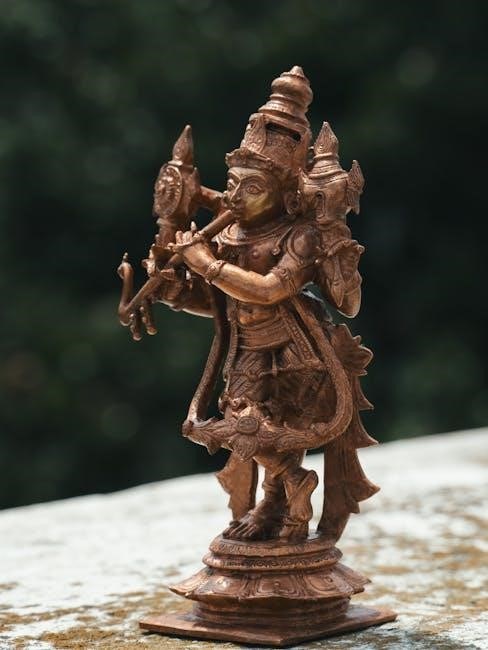This beloved hymn, All Creatures of Our God and King, is a timeless celebration of God’s creation, originally written by St․ Francis of Assisi․ Its profound lyrics, translated by William H․ Draper, and the iconic tune Lasst Uns Erfreuen, arranged by Ralph Vaughan Williams, have made it a cornerstone of Christian worship․ The hymn’s universal appeal lies in its call to all creation to praise God, resonating across cultures and generations․ PDF versions of the hymn are widely available for download, making it accessible for worship leaders and congregations worldwide․
1․1 Overview of the Hymn
All Creatures of Our God and King is a celebrated Christian hymn inspired by St․ Francis of Assisi’s poetic ode to creation․ Translated by William H․ Draper in 1919, the hymn calls all creatures to praise God, emphasizing harmony between nature and humanity․ Set to the melody Lasst Uns Erfreuen, arranged by Ralph Vaughan Williams, it features verses and a chorus with vibrant Alleluias․ Its universal message of gratitude and worship resonates globally, making it a beloved choice for ecumenical services and modern worship, with PDF versions widely available for download․
1․2 Historical Significance
All Creatures of Our God and King holds profound historical significance as a hymn rooted in St․ Francis of Assisi’s 13th-century poetic ode to creation․ Originally written in Italian, it reflects Francis’s deep connection to nature and spirituality; The hymn gained widespread popularity after William H․ Draper’s 1919 translation, which preserved the original’s essence while making it accessible to English-speaking audiences․ Its enduring relevance lies in its universal themes of praise and stewardship, bridging centuries and uniting diverse faith communities in worship, with its legacy continuing to inspire modern adaptations and ecumenical use․
1․3 Cultural Impact
All Creatures of Our God and King has left an indelible mark on Christian culture, transcending denominational boundaries․ Its adaptation into various languages and musical styles has made it a global anthem of praise․ The hymn’s themes of creation care and universal worship resonate deeply, inspiring ecological and social initiatives․ It is frequently featured in educational institutions and ecumenical services, fostering unity and spiritual reflection․ PDF versions ensure its accessibility, allowing it to remain a vibrant part of modern worship, education, and cultural heritage, continuing to inspire future generations․

Historical Background of the Hymn
All Creatures of Our God and King originated from St․ Francis of Assisi’s Cantico di Frate Sole in 1225, later translated by William H․ Draper in 1919․ The hymn’s tune, Lasst Uns Erfreuen, was arranged by Ralph Vaughan Williams in 1906, blending medieval and modern influences․ Its rich history reflects a harmonious fusion of poetic spirituality and musical artistry, making it a timeless piece of Christian heritage, widely available in PDF formats for contemporary worship and reflection․
2․1 The Original Composition by St․ Francis of Assisi
The original composition, Cantico di Frate Sole (Song of Brother Sun), was written by St․ Francis of Assisi in 1225․ This poetic masterpiece, penned in Italian, reflects his deep devotion to nature and creation․ Francis called all elements—sun, moon, wind, water, fire, and earth—to praise God, emphasizing unity and interdependence․ While the original text was specific to his context, its themes of praise and thanksgiving have transcended time․ The hymn’s essence remains preserved in PDF versions of modern translations and adaptations․
2․2 The Translation by William H․ Draper
William H․ Draper’s 1919 translation of St․ Francis’s hymn into English marked a pivotal moment in its global embrace․ Draper’s lyrical adaptation preserved the original’s spiritual depth, making it accessible to English-speaking audiences․ His version, often paired with the melody Lasst Uns Erfreuen, became a staple in worship․ PDF versions of the hymn widely circulate, featuring Draper’s translation, ensuring its enduring presence in modern worship resources and hymnals, thus extending its timeless message of praise and creation’s unity in honoring God․
2․3 The Musical Arrangement by Ralph Vaughan Williams
Ralph Vaughan Williams’s 1906 arrangement of All Creatures of Our God and King elevated the hymn to new heights of musical excellence․ By harmonizing the traditional German tune Lasst Uns Erfreuen, he created a grand, celebratory sound that complements the hymn’s exuberant praise․ His arrangement is widely featured in PDF hymnals and worship resources, ensuring its continued use in both traditional and modern services, making it a beloved and enduring part of Christian worship across the globe;
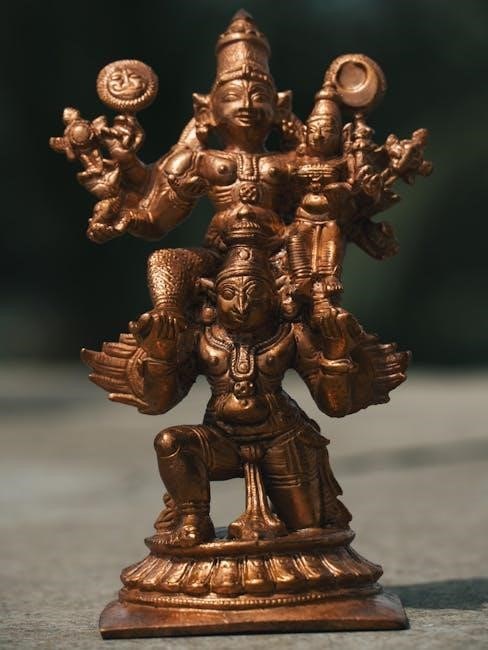
Structure of the Hymn
The hymn features multiple verses that call various elements of nature to praise God, with a joyous chorus and Alleluias that enhance its worshipful structure․
3․1 The Verses
The verses of All Creatures of Our God and King poetically invite creation to worship, addressing elements like the sun, moon, wind, and fire․ Each verse is rich with imagery, reflecting St․ Francis of Assisi’s deep connection to nature․ The original Italian poem, translated by William H․ Draper, maintains its spiritual depth, while additional verses by Jonathan and Ryan Baird extend the hymn’s scope․ Available in PDF formats, these verses are easily accessible for study and worship, preserving their timeless message of praise and stewardship․
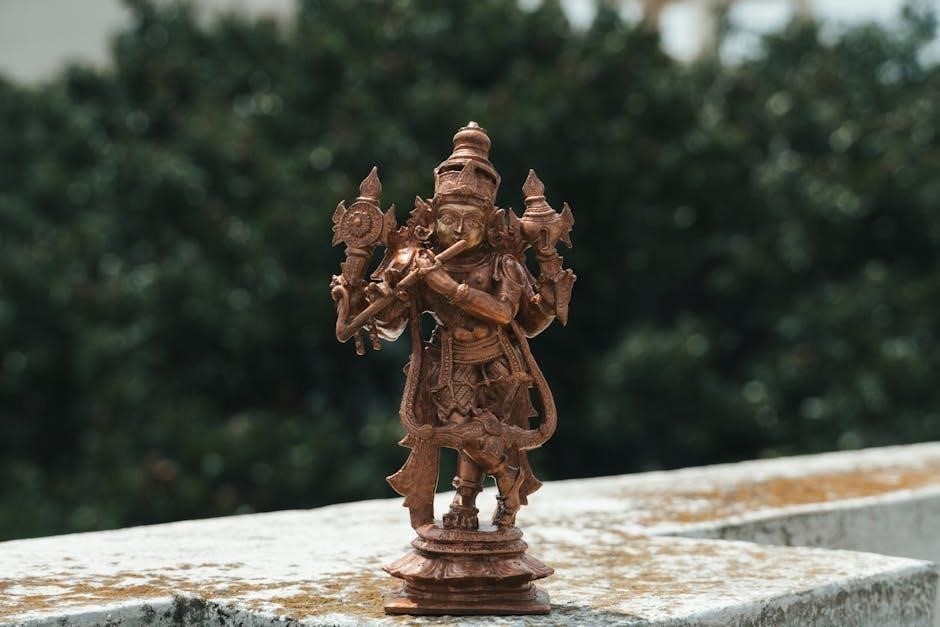
3․2 The Chorus
The chorus of All Creatures of Our God and King is a powerful call to worship, repeating the joyful phrase “Alleluia, Alleluia!” It unifies the hymn, emphasizing collective praise․ The chorus’s uplifting melody, paired with its triumphant lyrics, creates a sense of celebration and devotion․ Available in PDF formats, the chorus is often highlighted for its harmonious arrangement, making it a favorite in worship services․ Its repetitive structure engages congregations, fostering participation and a deep connection to the hymn’s message of gratitude and adoration․
3․3 The Use of Alleluias
The hymn’s Alleluias are a vibrant expression of joy and worship, punctuating the chorus with triumphant praise․ These refrains emphasize the universal call to celebrate God’s creation, creating a sense of communal celebration․ The Alleluias also serve as a musical and lyrical climax, heightening the emotional impact of the hymn․ Their repetition fosters unity and participation, making the hymn a powerful tool for worship․ PDF versions of the hymn often highlight these Alleluias, ensuring their resonance in both traditional and modern worship settings․
The Authors and Their Contributions
St․ Francis of Assisi penned the original poem, William H․ Draper translated it into English, and Ralph Vaughan Williams arranged the iconic melody, creating a timeless hymn․
4․1 St․ Francis of Assisi and His Poetry
St․ Francis of Assisi, an Italian Catholic friar, inspired by nature, wrote the original poem that became the hymn․ His poetic work, known as the Canticle of the Sun, reflects his deep devotion to God and creation․ Francis’s poetry, though simple, carries profound spiritual depth, emphasizing themes of praise, thanksgiving, and harmony with nature․ His words, translated and adapted over centuries, have become a cornerstone of Christian worship, resonating with people worldwide through the hymn All Creatures of Our God and King․
4․2 William H․ Draper and His Translation
William H․ Draper’s translation of St․ Francis of Assisi’s poem in 1919 brought the hymn to an English-speaking audience․ His work preserved the spiritual essence of the original, emphasizing themes of nature and praise․ Draper’s translation aligns with the poetic intent of Francis, ensuring the hymn’s message of devotion and harmony with creation remains intact․ His contribution has made All Creatures of Our God and King accessible globally, featured in numerous hymnals and PDF resources for worship․
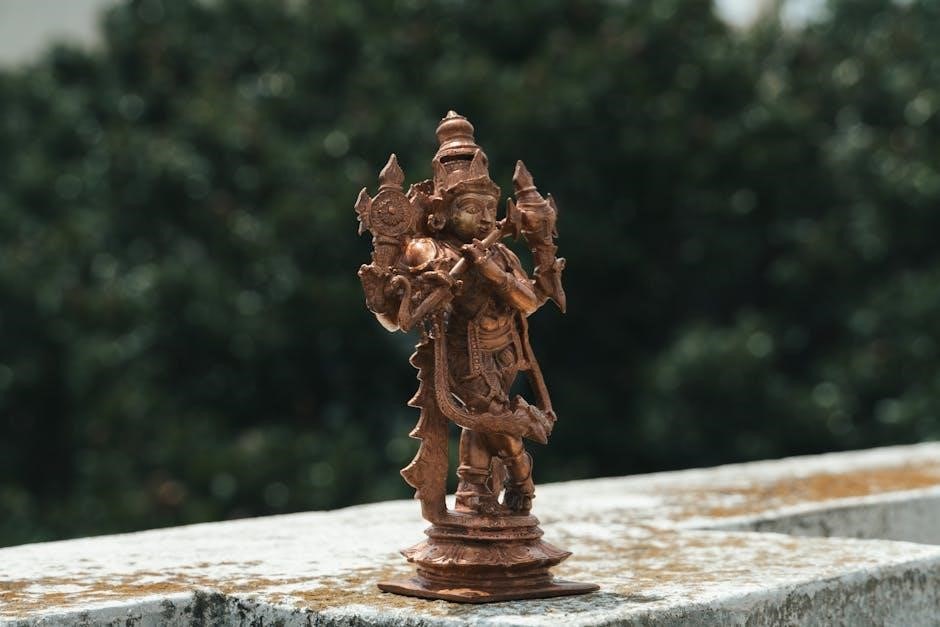
4․3 Ralph Vaughan Williams and His Musical Influence
Ralph Vaughan Williams’s arrangement of Lasst Uns Erfreuen in 1906 transformed the hymn into a beloved musical masterpiece․ His harmonization and orchestration elevated the melody, creating a powerful yet reverent sound that complements Francis’s poetic vision․ Vaughan Williams’s influence ensured the hymn’s enduring popularity, making it a staple in Christian worship․ His work is widely regarded as a cornerstone of sacred music, with his arrangement featured in numerous PDF hymnals and worship resources, ensuring its continued use in modern worship settings․
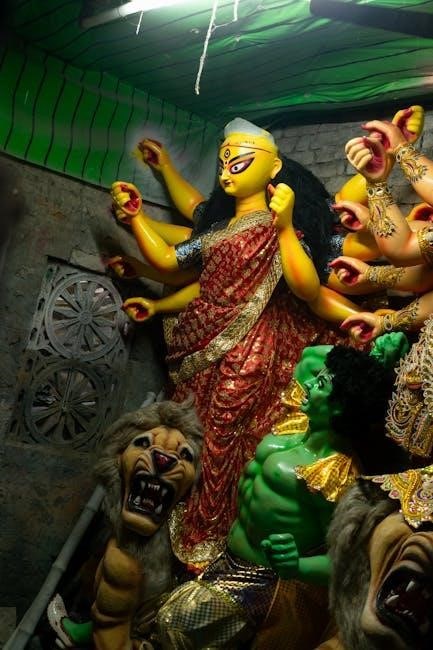
The Musical Composition
All Creatures of Our God and King features the iconic German tune Lasst Uns Erfreuen, beautifully arranged by Ralph Vaughan Williams․ The melody’s harmony and orchestration create a powerful, reverent sound that enhances the hymn’s spiritual impact․ The composition’s structure, including verses and chorus, is designed to engage congregations in joyful worship․ PDF versions of the hymn’s sheet music are widely available for download, ensuring its continued use in worship services worldwide․
5․1 The Tune “Lasst Uns Erfreuen”
The hymn is set to the traditional German tune “Lasst Uns Erfreuen”, originally from a 17th-century collection․ Ralph Vaughan Williams famously arranged it for the English hymn, creating a majestic and uplifting melody that complements the lyrical praise of creation․ The tune’s harmony and structure have been widely praised for enhancing the hymn’s spiritual impact․ PDF versions of the sheet music, including the tune, are readily available for download, making it accessible for worshippers and musicians to use in services and performances․
5․2 The Harmony and Arrangement
The harmony and arrangement of All Creatures of Our God and King were masterfully crafted by Ralph Vaughan Williams, enhancing the hymn’s emotional depth․ His adaptation of the Lasst Uns Erfreuen tune created a powerful, resonant sound that complements the poetic lyrics․ The arrangement features rich harmonic textures, supporting the melody while elevating the overall worship experience․ The hymn’s structure, including its verses and chorus, is beautifully balanced, making it a joy to sing․ PDF versions of the arrangement are widely available for download, ensuring its accessibility for worship leaders and musicians․
5․3 The Use of Instruments
The hymn All Creatures of Our God and King is often accompanied by a variety of instruments, enhancing its grandeur and emotional impact․ Ralph Vaughan Williams’ arrangement features rich orchestration, including brass, strings, and woodwinds․ The organ is commonly used to provide a strong harmonic foundation, while instruments like the flute and trumpet add vibrant accents․ PDF versions of the hymn include instrumental scores for ensembles, allowing for both simple and elaborate performances․ This flexibility makes the hymn adaptable to diverse worship settings and musical traditions․
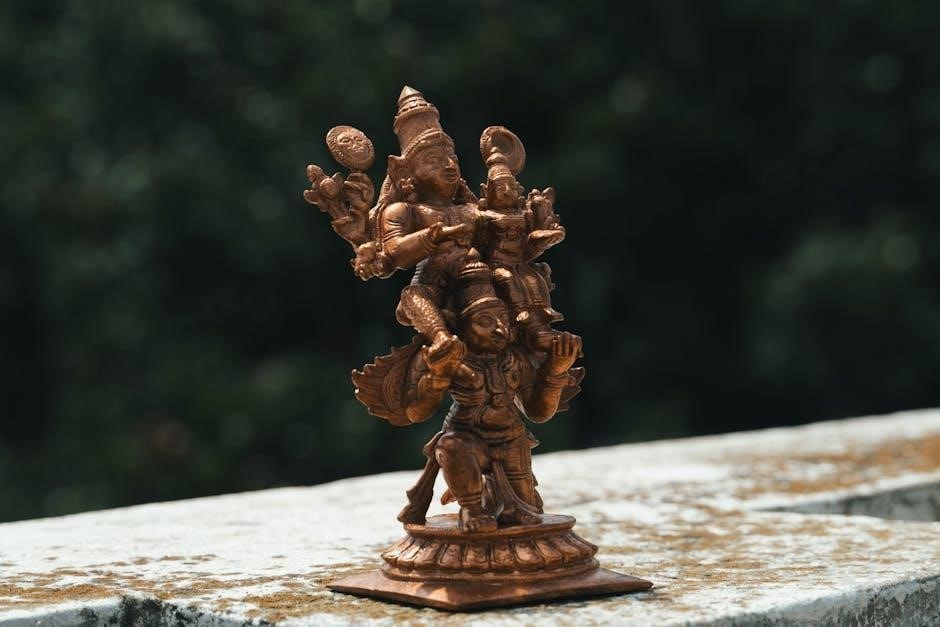
The Hymn in Worship and Liturgy
All Creatures of Our God and King is widely used in Christian worship, often during outdoor or creation-themed services․ Its PDF versions are easily accessible, making it a popular choice for liturgical celebrations across denominations․
6․1 The Hymn’s Role in Christian Worship
All Creatures of Our God and King holds a significant place in Christian worship, often sung during creation-themed services or outdoor gatherings․ Its call to all creatures to praise God resonates deeply, fostering a sense of unity and stewardship․ The hymn’s PDF availability ensures widespread use in liturgical settings, making it accessible for congregations worldwide․ Its themes of praise and thanksgiving align with ecumenical services, bridging denominational divides and inspiring collective worship․
6․2 The Hymn’s Use in Different Denominations
All Creatures of Our God and King is widely embraced across various Christian denominations, including Catholic, Anglican, Protestant, and Evangelical traditions․ Its universal message of creation and praise makes it a staple in hymnals such as The Hymnal 1982 and the African Methodist Episcopal Church Hymnal․ The hymn is often featured in ecumenical services, bridging divides between denominations․ Its availability in PDF format through resources like the Open Hymnal Project ensures accessibility for diverse worship settings, fostering unity in praise across different traditions․
6․3 The Hymn’s Popularity in Modern Worship
All Creatures of Our God and King remains a cherished hymn in modern worship due to its timeless themes of creation and praise․ Its universal message resonates with contemporary congregations, emphasizing unity with nature and God․ The hymn’s inclusivity, calling all creatures to praise, aligns with modern values of diversity and environmental stewardship․ Its availability in PDF through the Open Hymnal Project and other digital resources ensures accessibility for worship leaders․ This adaptability, coupled with its enduring spiritual depth, makes it a staple in both traditional and contemporary services, bridging generations and worship styles․
The Hymn’s Lyrics and Their Meaning
The hymn’s lyrics, rooted in St․ Francis of Assisi’s poetry, call all creatures to praise God, emphasizing nature’s beauty and divine creation․ Themes of praise and thanksgiving shine through, encouraging worship and reflection on God’s handiwork, resonating deeply in both traditional and modern worship settings․
7․1 The Call to All Creatures to Praise God
The hymn invites all creatures to join in praising God, emphasizing unity and harmony among creation․ It calls upon the sun, moon, wind, clouds, and even humanity to lift their voices in worship, reflecting St․ Francis of Assisi’s deep connection with nature and his belief in the sanctity of all life․ The lyrics, translated by William H․ Draper, inspire a sense of collective adoration, encouraging believers to recognize God’s presence in every aspect of the world․
The chorus, with its triumphant Alleluia, underscores the joy and reverence of this universal praise․ The hymn’s structure, set to the tune Lasst Uns Erfreuen, arranged by Ralph Vaughan Williams, further amplifies its majestic and uplifting message, making it a powerful call to worship for all creation․
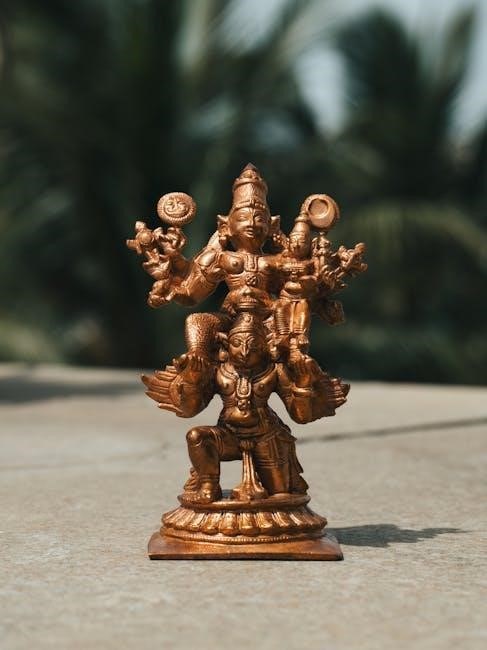
7․2 The Reference to Nature and Creation
The hymn beautifully references nature and creation, calling upon the sun, moon, wind, clouds, and water to join in praising God․ St․ Francis of Assisi’s original poem, translated by William H․ Draper, reflects a deep reverence for the natural world, seeing it as a testament to God’s majesty․ The lyrics emphasize the interconnectedness of all creation, encouraging believers to recognize God’s presence in every element of the world around them․

7․3 The Themes of Praise and Thanksgiving
The hymn is a powerful expression of praise and thanksgiving, calling all creatures to glorify God for His majesty and creation․ The chorus, with its joyful “Alleluia,” emphasizes the universal call to worship․ Verses highlight nature’s elements—sun, moon, wind, and fire—as symbols of God’s handiwork, inspiring gratitude․ The hymn’s themes of praise and thanksgiving encourage believers to acknowledge God’s sovereignty and the beauty of His creation, fostering a spirit of reverence and joy in worship․
The Hymn’s Cultural and Social Impact
The hymn has united diverse faith communities, fostering ecumenical worship and inspiring gratitude for creation․ Its universal themes of praise and thanksgiving transcend cultural boundaries, enriching spiritual life globally․
8․1 The Hymn’s Role in Ecumenical Services
All Creatures of Our God and King has become a unifying force in ecumenical worship, transcending denominational boundaries․ Its universal themes of creation and praise resonate across Christian traditions, fostering unity․ The hymn’s inclusion in diverse hymnals, such as the African American Heritage Hymnal and Anglican Hymns Old and New, highlights its adaptability․ It is often sung in interdenominational gatherings, creating a shared spiritual experience․ Its timeless message of gratitude and worship continues to inspire ecumenical dialogue and cooperation, bridging divides through collective praise․
8․2 The Hymn’s Use in Educational Institutions
All Creatures of Our God and King is widely used in educational institutions to teach theology, music, and environmental stewardship․ Schools incorporate the hymn into curricula to explore its rich theological and poetic depth․ Its themes of creation and praise align with lessons on faith, ecology, and ethics․ Many institutions use PDF versions for easy access, enabling students to study and perform the hymn in classrooms and chapels․ This practice fosters spiritual growth and musical education, making it a valuable resource for interdisciplinary learning․
8․3 The Hymn’s Influence on Other Musical Works
All Creatures of Our God and King has inspired numerous musical adaptations and arrangements, influencing composers and musicians globally․ Its iconic melody, Lasst Uns Erfreuen, has been reimagined in orchestral pieces, choral arrangements, and instrumental solos․ The hymn’s harmony and lyrical themes have also sparked contemporary compositions, blending traditional and modern styles․ Its enduring appeal is evident in its integration into various musical genres, making it a timeless source of inspiration for both sacred and secular works, further cementing its legacy in music history․
The Hymn’s Availability in PDF Format
All Creatures of Our God and King is widely available in PDF format through hymnals, songbooks, and digital platforms like Hymnary․org and the Open Hymnal Project․ These sources provide free downloads for worship and personal use, ensuring accessibility for congregations and musicians worldwide․ The PDF versions include lyrics, sheet music, and chord progressions, making it a valuable resource for both traditional and modern worship settings․ Its public domain status facilitates easy distribution and adaptation․
9․1 Sources for Downloading the Hymn
PDF versions of All Creatures of Our God and King are readily available from reputable sources like Hymnary․org and the Open Hymnal Project․ These platforms offer free downloads of the hymn, including lyrics, sheet music, and chord progressions․ Additionally, websites such as Choristers Guild and various church resources provide downloadable PDFs for worship planning․ These sources are widely used by worship leaders, musicians, and congregations for easy access to this beloved hymn․
9․2 The Hymn’s Inclusion in Hymnals and Songbooks
All Creatures of Our God and King is widely featured in numerous hymnals and songbooks, including The Hymnal 1982 and African American Heritage Hymnal․ Its timeless appeal has led to its inclusion in modern collections like Psalms and Hymns to the Living God and Worship and Rejoice․ The hymn’s arrangement, set to the tune Lasst Uns Erfreuen, is often highlighted, making it a staple in both traditional and contemporary worship resources across denominations․
9․3 The Hymn’s Use in Digital Worship Resources
Digital platforms have embraced All Creatures of Our God and King, offering PDF downloads and multimedia resources․ Websites like Hymnary․org and the Open Hymnal Project provide free access to sheet music, MIDI files, and printable scores․ This accessibility ensures the hymn remains a vibrant part of modern worship, easily integrated into digital presentations and virtual services, fostering engagement across global congregations and enriching worship experiences through technology․
All Creatures of Our God and King remains a timeless hymn, celebrated for its rich theology and universal appeal․ Its availability in PDF format ensures its continued relevance, enriching worship and inspiring praise across generations and cultures․
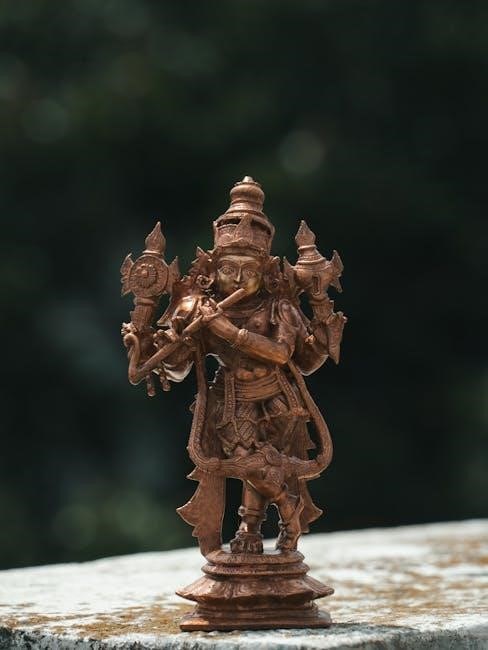
10․1 The Enduring Legacy of the Hymn
All Creatures of Our God and King has left an indelible mark on Christian worship․ Its origins, rooted in St․ Francis of Assisi’s poetry and enhanced by William H․ Draper’s translation, have transcended time․ The hymn’s enduring legacy is evident in its widespread use across denominations and its adaptation into various musical arrangements․ Available in PDF format, it continues to inspire and unite worshippers globally, fostering a deep connection to creation and the Creator․ Its timeless message ensures its relevance for future generations․
10․2 The Hymn’s Continued Relevance in Modern Worship
All Creatures of Our God and King remains a powerful and relevant hymn in modern worship, bridging traditional and contemporary practices․ Its themes of creation, praise, and stewardship resonate deeply in today’s context, especially amid growing environmental awareness․ The hymn’s adaptability to various musical styles and its availability in PDF formats ensure its accessibility for modern congregations․ Its universal message of gratitude and worship continues to inspire diverse audiences, making it a cherished part of Christian worship across generations and cultures․
10․3 The Hymn’s Universal Appeal
All Creatures of Our God and King transcends cultural and denominational boundaries, resonating with diverse audiences worldwide․ Its universal themes of creation, praise, and thanksgiving speak to people of all ages and backgrounds․ The hymn’s inclusion in numerous hymnals, educational institutions, and digital resources underscores its widespread acceptance․ Its adaptability to various musical styles and languages has further cemented its global popularity, making it a unifying force in worship and a testament to the shared human experience of praising God․
